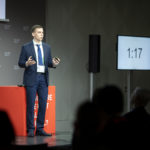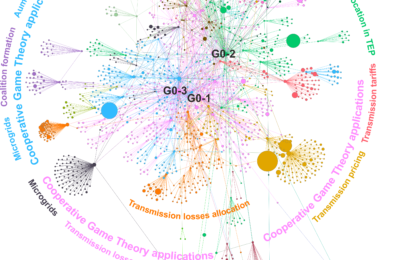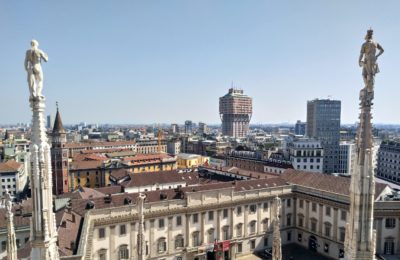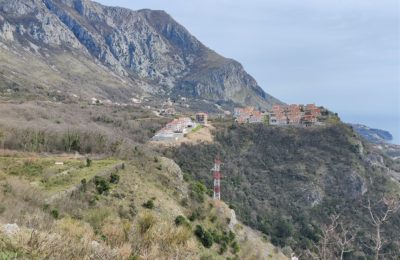The city of Starbucks. Seattle seems to be proud of its famous coffee brand. The new cafes continue taking over the city. In downtown, each building has its own Starbucks cafe, sometimes two. Staying at a crossroads, it was sometimes hard for me to decide which Starbucks to go to. There were multiple logos everywhere. Not enough coffee on the streets? There are special Starbucks refrigerators in every shop where it is possible to take a chilled coffee away. An unprecedented level of prosperity for a business!
The same can be said about the INFORMS Annual Meeting. One of the greatest conferences I’ve ever attended. It is hard to believe that more than 7.000 participants gathered together for four days to present and discuss different problems in Operations Research and Management Sciences. Surprisingly, there was no feeling of overcrowding during the conference. The organizers arranged the meetings in the two huge buildings: Sheraton Grand Seattle and Washington State Convention Center. Each conference room of the buildings was used for special sessions where participants made presentations and reports. Every hour the sessions changed, and the new participants held the floor. Moreover, the schedule was optimized in such a way that people interested in one topic did not have to change rooms or buildings often. So, the conference went pretty smoothly. Every one of the 7.000 presenters had enough time to explain their studies to the audience.
Surely, Starbucks coffee was served at the conference.
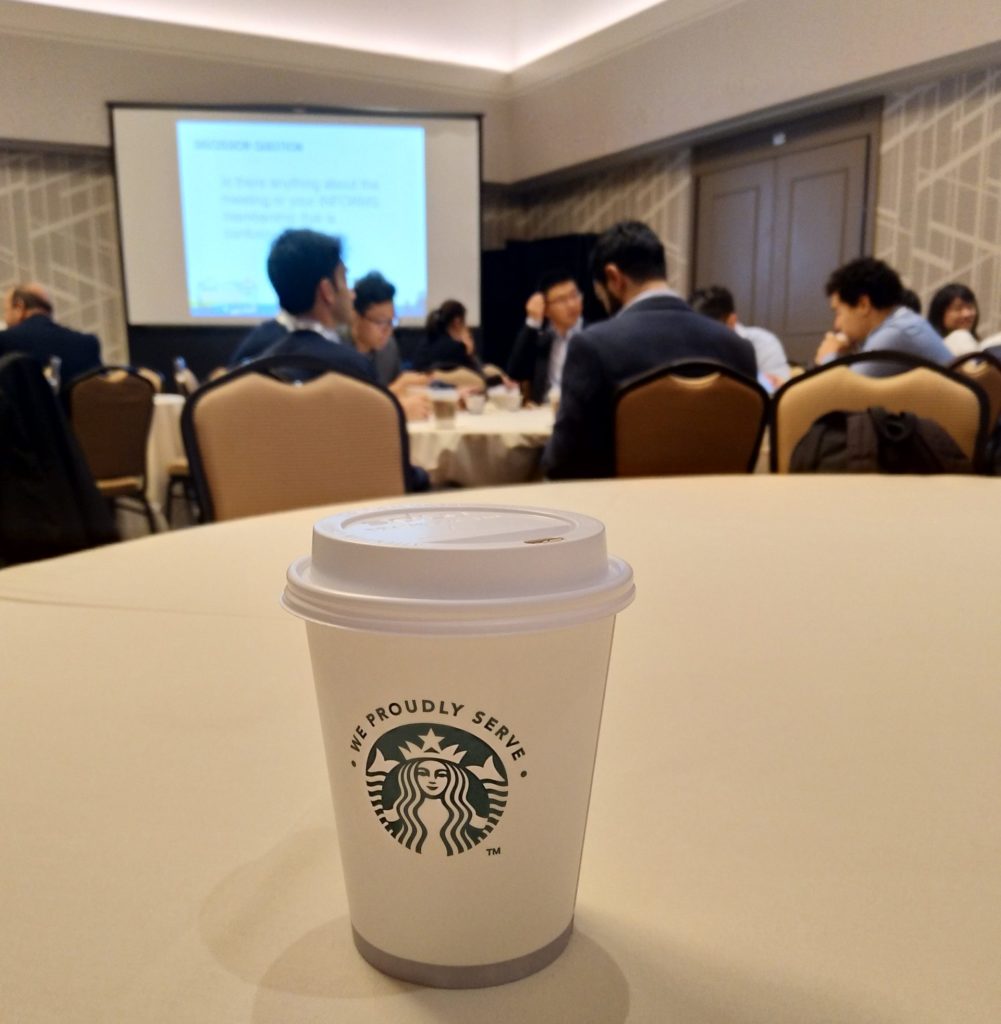
I was invited to give a speech at the General Session entitled “Power System Expansion Analysis” chaired by Prof. Enzo Sauma. In the report “Incorporating Cooperative Game Theory Principles into Cross-Border Transmission Expansion Planning Algorithms,” I presented a new case study of cross-border power interconnections. The case proves that even though interconnection projects could bring significant benefits in terms of cost savings, the negotiation process on cost-benefit allocation may fail. The reason is the differences in the contributions that players add to the grand coalition and sub-coalitions. The resulting cooperative game may turn out to be non-convex. And the solution concepts as the Shapley value may fail to find a stable allocation solution. Therefore, attention should be paid to the stability of cooperation when looking for the optimal (least cost) transmission expansion plans for cross-border power interconnections.
When you see a good move, look for a better one:

The presented 4-system example of cross-border power interconnections. Energy cooperation leads to a 4.1% decrease in generation cost, which is the optimal solution to the transmission expansion problem.

However, the optimal scheme of the interconnections may be unrealistic since System A becomes underestimated in the grand coalition. The Shapley value falls out of the Core of the game. Therefore, System A may break the agreement and do not participate in the interconnection project. That would be harmful for the overall regional cooperation.

The suggested bi-level approach incorporates Cooperative Game Theory principles into the transmission planning algorithm and avoids situations where some parties may be underestimated. The new solution is suboptimal (total savings reach 3.8% instead of 4.1%). However, the Core of the game becomes significantly larger, and the Shapley value is a stable solution now.
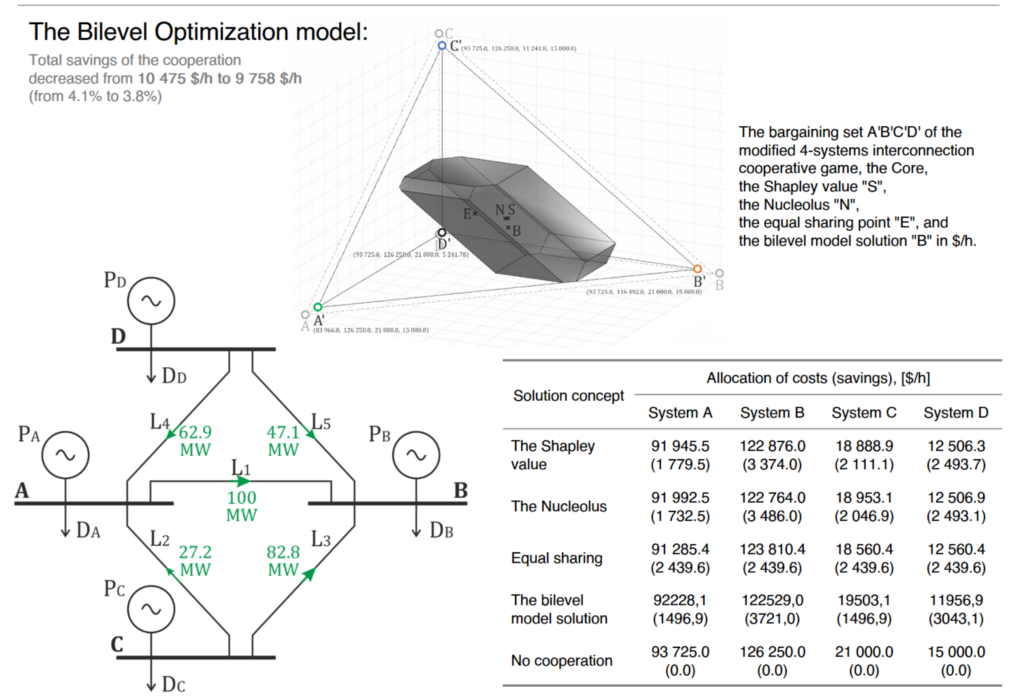
I think it is exciting how deviation from the optimal solutions may dramatically change the conditions of cooperation. But, there is still a lot of work ahead. In the next journal paper, we are going to prove that the bi-level approach indeed leads to the least-cost solutions with the desired level of negotiation stability. Moreover, we plan to implement this framework to real-world cases like the Asian Super Grid and Latin America cross-border interconnections.
Unfortunately, it turned out that finding the mentioned suboptimal transmission plans involves severe computational issues. For the 10-player cooperation case, 1023 transmission expansion problems must be solved simultaneously. And on top of that, at least 90 bilateral threats should be tuned in order to get balanced cooperation. The resulting formulation is a huge mixed-integer linear program (MILP) that takes days to be solved by modern branch-and-bound algorithms. I hope to get solid results for the realistic case studies in 2020 and finalize the paper.
Speaking about the city, I would say that it was hard to feel Seattle in four days. It seems heterogeneous compared to the European cities. The downtown surrounds you by the grey business skyscrapers. And the street blocks create a strict working atmosphere. However, after a 15-20 minute walk, you could find yourself on a nice quiet street with family houses and no tall buildings. Or, you may get to one of the piers and enjoy the view of the bay and snowy mountains.
To me, Seattle seemed a bit too industrial. There were many docks, ships, and factories intervening in the view. But, it was a pleasure to walk through the city. The parks, the lakes, the Space Needle, and the Museum of Pop Culture are remarkable places to visit.
Seattle surprised me in some aspects that are not usual in Europe, or at least in Russia. I’ll give one bright example here. The floatplanes! They fly all over the city and land right on the city lakes. One of the planes landed just in front of me when I was walking in Lake Union Park. It was fascinating to stay in the park and watch how confidently floatplanes were taking off and landing on the lake. ✈️ ✈️ ✈️
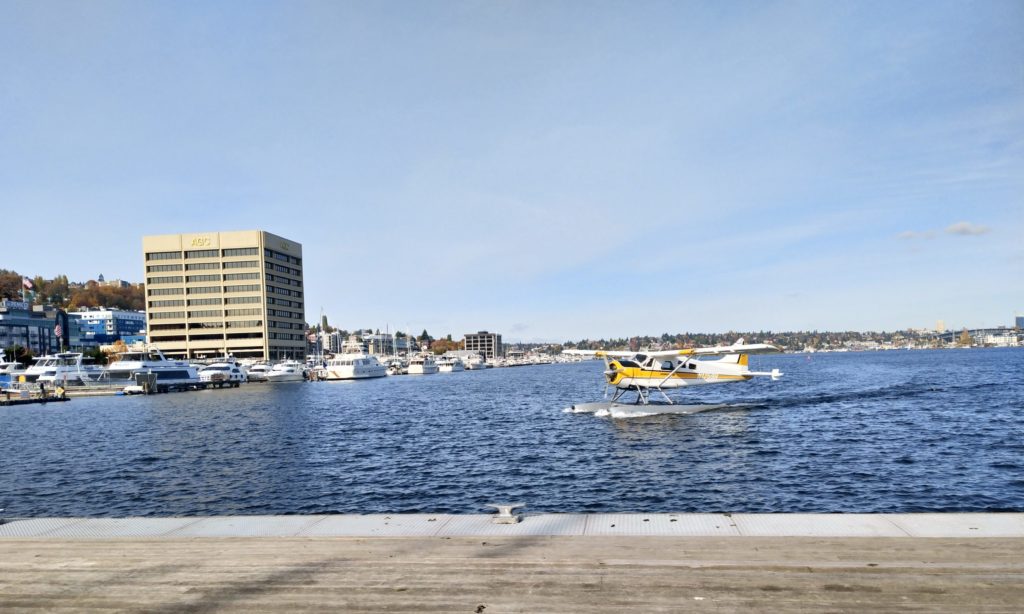
Having visited Seattle and attended the INFORMS Annual Meeting, I wonder how diverse other American cities and conferences could be. Since operations research and power systems studies are developing fast in the U.S., the chances are that I’ll figure this out soon.
Andrey Churkin (Андрей Чуркин) 2019







